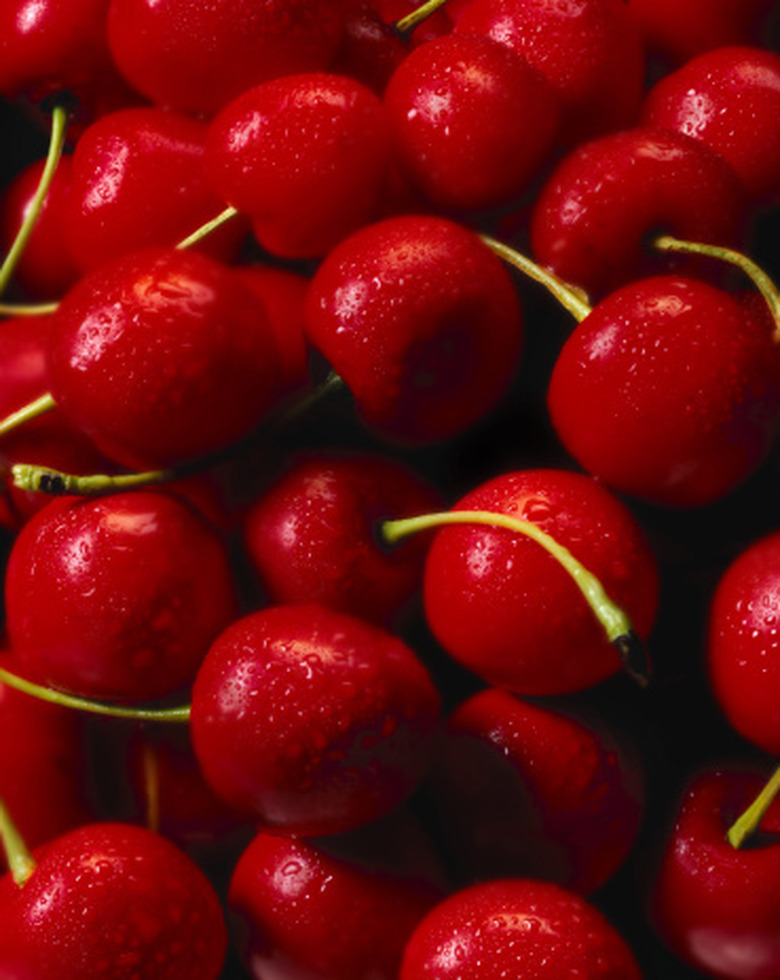Good Pollinators For Bing Cherry Trees
Bing cherry trees are among the most common sweet cherries. They produce dark-skinned fruits in good quantities. Bing cherries are eaten fresh off the tree or used in cooking. In order to produce a crop of cherries, the bing cherry tree needs pollen from another variety cherry tree.
Bing cherry trees are among the most common sweet cherries. They produce dark-skinned fruits in good quantities. Bing cherries are eaten fresh off the tree or used in cooking. In order to produce a crop of cherries, the bing cherry tree needs pollen from another variety cherry tree. Choosing the right pollinator makes all the difference in your cherry crop.
Self-Sterile
Sweet cherry trees like the bing are considered self-sterile. They are unable to pollinate with their own kind and require pollen from a cherry tree of a different variety.
- Bing cherry trees are among the most common sweet cherries.
- Sweet cherry trees like the bing are considered self-sterile.
Blossom Time
One of the key features in choosing a pollinator tree for your bing cherry tree is the timing of the blossoms. Both varieties must bloom at the same time in order for the pollen to be available for the Bing cherry tree's flowers.
Acceptable Pollinators
Several varieties work well as pollinators for bing cherry trees. Washington State University's extension service recommends Black Tartarian or Republican, Stella, Van or even a sour cherry such as Mortmormency. The University of California at Davis also recommends Van or Black Tartarian in addition to Sam.
Good Pollinators For Bing Cherry Trees
Named for the foreman, Ah "Bing," in Seth Lewelling's 19th century Oregon fruit tree nursery, the "Bing" cherry is the most popular sweet cherry cultivar. The tree grows in U.S. Department of Agriculture plant hardiness zones 5 through 8 and reaches heights up to 20 feet. It produces small, white flower clusters and dark red, sweet, juicy fruit, suitable for fresh eating and cooking. " Conversely, sour cherry varieties are self-fruitful, meaning they can produce fruit with pollen, transferred by insects, from flowers on the same tree. Sour cherry varieties can provide pollen for "Bing" cherries if their bloom periods coincide. They must also be planted close together to ensure that insects visit each tree. Pollen moves from flower to flower with the help of an agent such as wind, water, insects, birds and mammals. The most common agents for pollination are insects, particularly bees.
- One of the key features in choosing a pollinator tree for your bing cherry tree is the timing of the blossoms.
- Both varieties must bloom at the same time in order for the pollen to be available for the Bing cherry tree's flowers.
References
- University of California Agriculture and Natural Resources: Selecting Fruit, Nut, and Berry Crops for Home Gardens in San Mateo and San Francisco Counties
- Oregon State University Agricultural Experiment Station: Cherry on Top: Oregon Sweet Cherries Make Their Mark on the World
- Washington State University Spokane County Extension: Pollination of Fruit Trees
- Department of Horticulture Purdue University Cooperative Extension: Pollination of Fruits and Nuts
- University of California Agriculture and Natural Resources: Sweet Cherries for the Home Grounds
- Monrovia: Bing Sweet Cherry
- New South Wales Department of Agriculture: Honey Bees in Cherry and Plum Pollination
